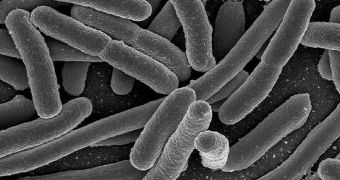A study published in the latest issue of the American Society for Microbiology's open-access journal mBio reveals that meats such as uncured pepperoni or salami can contain antibiotic residues that destroy helpful bacteria manufacturers introduce in their products in order to make them more acidic.
This is needed because harmful microorganisms cannot develop properly in an acidic environment, and the fermentation process is thus slowed down considerably. However, the aforementioned meats contain antibiotics that destroy the lactic-acid-producing bacteria manufacturers use.
As such, there is nothing to make the meat more acidic, which means that pathogens can grow at will. This significantly increases consumers' chances of getting infected with the microorganisms, and developing several diseases, many of which can be severe.
In the August 28 issue of mBio, researchers from the University College Cork, in Ireland, and the University of Copenhagen, in Denmark, argue that the currently-regulated antibiotic contamination limits – in use in the United States and the European Union – are too permissive.
The team explains that these values are high enough to allow whatever residues are left inside the meat to destroy bacteria that produce lactic acid. Pathogens including salmonella or E. coli can easily grow inside these environments, Science Blog reports.
“At low concentrations and at regulatory levels set by authorities, we could see that the lactic acid bacteria are more susceptible to the antibiotics than the pathogens are,” study researcher and University of Copenhagen investigator, Hanne Ingmer, explains.
“So basically, we can have a situation where residual antibiotics in the meat can prevent or reduce fermentation by the lactic acid bacteria, but these concentrations do not effect survival or even multiplication of pathogens,” the scientist goes on to say.
A possible solution to this issue would be to genetically-engineer lactic-acid-producing bacteria that are able to withstand the antibiotic dose levels current regulations stipulate. These organisms would however still be susceptible to higher levels of the drugs, if the need to destroy them arose.
But “the obvious solution is to eliminate the use of antibiotics as growth promoters and closely monitor the use of antibiotics in treating farm animal diseases,” Ingmer concludes.

 14 DAY TRIAL //
14 DAY TRIAL //